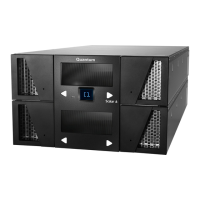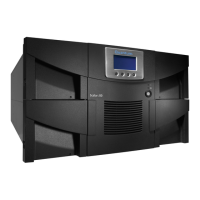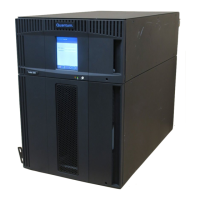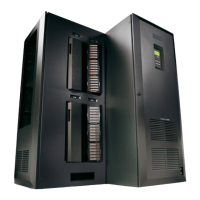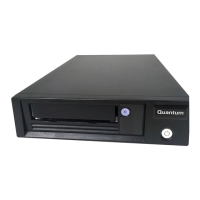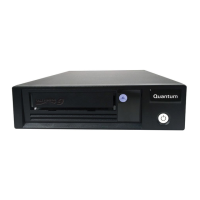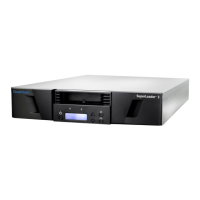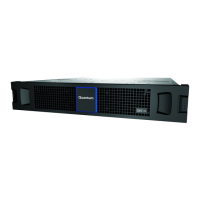Chapter 2: Troubleshooting Your Library
Interpreting LEDs
Quantum Scalar i6000 User’s Guide 95
Table 9 Blade Status LED
States - Normal Conditions
Actions Based on LED States
When the RAS system is operating properly, service actions should be
based on tickets first and foremost. However, some situations occur
when the amber LED indicates problems that are not detected by the
ticket system. You should always act on any amber LED that is solidly on,
which indicates that the blade’s power and control subsystem has
failed. In this case, replace the blade.
When you replace a blade FRU or escalate a problem based on LED
states, perform the following steps:
1 Observe and report the timing pattern of the blue, amber, and
green LED group. Spend at least 30 seconds observing the LEDs and
record the results in the service request (SR) and on any equipment
failure report form that you return with the part. Proper reporting
of all LED states is critical for determining the root cause of the
failure.
2 Capture a system snapshot and send it to technical support for
analysis.
Interpreting Drive
Status LEDs
The library reports all drive issues that can affect customer operations.
In addition to examining library reports, you should observe drive sled
link LED and status LED activity.
LED Color State and Explanation
Green Blinks one time every second (1 Hz) — blade’s main processor is operating normally
(however, this does not apply to the LMD; solid on indicates that the LMD’s main
process is operating normally)
Note: If there are issues during an update using an embedded flash, the green LED is
solid for two seconds, and then off for one second.
Amber Solid off — no errors are detected; blade’s power and control subsystem is operating
normally
Blue Blinks one time every 10 seconds (flash) — blade is powered on; operating normally
